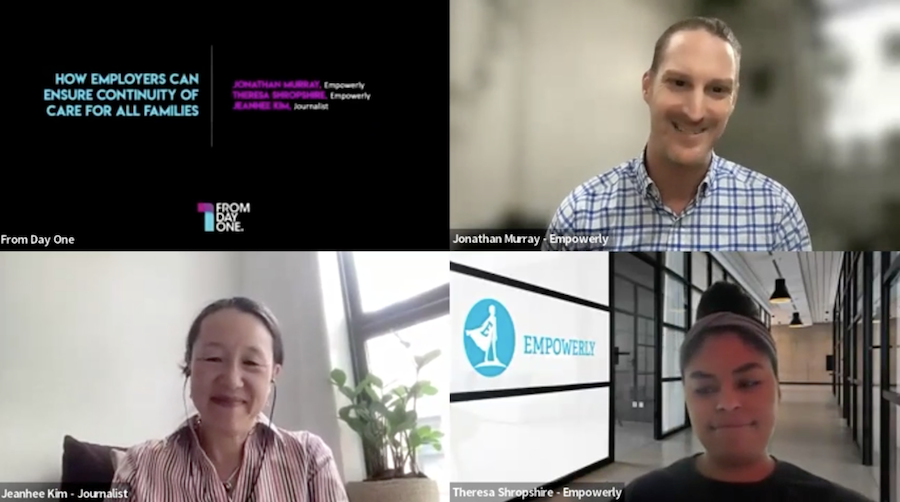Why College Prep for Teens May Become the Next Workplace Benefit


Employers offer a wide variety of benefits for the working parents of young children, from onsite childcare and paid leave to fertility and conception benefits, but what about support for parents of older children and teens? During the teen years, “There's a massive emotional strain between parents and teenagers that folks are way too familiar with. There's financial uncertainty,” said Jonathan Murray, head of Empowerly for Employers. And “college prep is a major source of stress for these parents and has a significant impact on workplace productivity.”
Murray ticked off some compelling statistics from a survey of 1,000 working parents that Empowerly commissioned to explore the value of an employee benefit for college prep. A full 95% reported that they are nervous about their teen's future when it comes to college prep. Fifty percent of them said that college prep was a constant stress and 88% of the 1,000 parents said that they use time at work to help their teens with college prep. One in four of these parents admit to using from six to 15 hours a week.
“It’s not surprising that parents are looking to employers to provide help, and looking to employers to provide college prep benefits,” said Murray. “It's the number two benefit that was requested by parents of teens,” after financial well-being, he said.
I interviewed Murray and Theresa Shropshire, an enrollment expert and college consultant for Empowerly, about the compelling reasons for employers to support their workforce during these critical years in a From Day One webinar titled, How Employers Can Ensure Continuity of Care for All Families.
As a working parent of a teen who just went through this process, I can attest that the high school years and the college prep and application process are unlike what I experienced myself as a teen college aspirant. The competition and pressure for teens to perform at a high level academically, athletically and even socially is astonishing. The private college counseling industry has boomed as overwhelmed parents seek to navigate these unfamiliar demands.
Shropshire described the types of services college prep companies such as Empowerly now offer, which range from the familiar, such as helping students craft compelling college application essays, to the less well-known, such as helping students choose everything from courses, extracurricular activities, and selective summer programs beginning as early as eighth grade. “A lot of the parents that I speak with are actually first generation in the U.S. Or maybe they went to college outside of the U.S. The process here is very, very different. It’s not all about grades and test scores.”

Many of the services save parents’ decision-making time, such as counseling parents and teens on how and when to take advantage of early action, early decision, and regular decision college application options as well as evaluating and comparing costs and financial aid packages when a fortunate student is deciding among multiple college acceptances.
While college prep is an emerging employee benefit, Murray described how the realization that teens need more support is beginning to permeate society. He pointed to the recent partnership between New York City and TalkSpace, the mental health app, to deliver free mental health care to teens from age 13 to 17.
“It really hits to the heart of what benefits are truly for,” said Murray. “They’re the ability for an employer to step in and help their individual employees or their employee families with these large problems that impact them, impact their families, impact the organization, and impact the communities.”
College prep services like Empowerly not only help teens, Murray says. “There’s benefits for the parents, and then downstream, that benefits employers and communities.”
There are different options for employers as well, says Murray. He described tiers of benefits that begin at no cost to either the employee or employer. Empowerly would partner with employers to offer no-cost access to college prep resource materials, such as samples of successful college essays. Options then level up to one-on-one consulting between the employee and college prep service at a cost that could be borne directly by the employee or by the employer.
He emphasized that Empowerly would work with employers to craft plans that satisfy the employers and provide real benefits to employees. “We can provide ROI on it. It’s just so highly bespoke based on the needs.”
Editor's note: From Day One thanks our partner, Empowerly, for sponsoring this webinar.
Jeanhee Kim is an independent journalist who has worked for CoinDesk, Crain’s New York Business, Money magazine and Forbes Asia.
The From Day One Newsletter is a monthly roundup of articles, features, and editorials on innovative ways for companies to forge stronger relationships with their employees, customers, and communities.